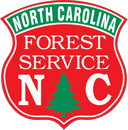Location:
Airstrip Trail will be closed for repair on Monday 29 July. If the weather cooperates, the trail should reopen on Tuesday the 30th.
Flatwoods Trail is closed to accommodate timber activity. Please be safe and choose a different trail.
Farmhouse Trail has been rerouted to the intersection of Sky Valley Road and Buck Forest Road to accommodate timber activity.
Barn Trail is closed.
Sandy Trail is closed.
